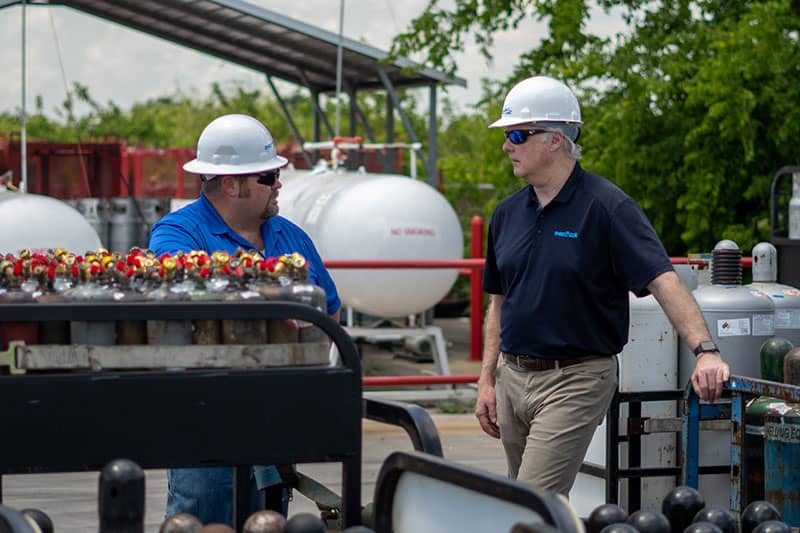Improving Welding Accuracy and Speed with nexAir’s Welding Automation Tools
Fabricators face relentless pressure to increase output while maintaining exceptional quality standards. No matter how skilled the operator, manual welding processes introduce variability that impacts both production rates and final quality. Our welding automation tools address these challenges directly, delivering the consistency, speed, and precision that today’s competitive environment demands.
The Automation Advantage
The benefits of welding automation extend throughout the production process:
Weld Quality Consistency: Automated systems maintain precise torch angles, travel speeds, and wire feed rates across entire production runs. This consistency eliminates the natural variations during manual welding, even among the most experienced welders. The result is uniform weld appearance, penetration depth, and mechanical properties across every part produced.
Production Throughput: Automated welding systems operate at optimal parameters continuously, without breaks or fatigue. A fabrication shop in Tennessee reported a 215% increase in daily output after implementing our automated orbital welding system for pipe assemblies. This dramatic improvement came from faster welding speeds and eliminating rework that previously consumed valuable production time.
Labor Optimization: Rather than replacing skilled welders, automation tools allow them to supervise multiple welding operations simultaneously. This multiplier effect addresses the persistent skilled labor shortage while allowing experienced personnel to apply their expertise where it delivers the greatest value—in setup, programming, and quality oversight rather than repetitive manual welding.
Selecting the Right Automation Level
Welding automation isn’t all-or-nothing. We offer solutions across the automation spectrum:
- Semi-Automated Systems: Welding positioners, turning rolls, and manipulators that improve ergonomics and consistency while maintaining operator control
- Mechanized Welding: Track-based systems and seamers that provide consistent travel speeds with operator supervision
- Fully Automated Cells: Robotic systems with advanced sensing and adaptive control for high-volume production
- Collaborative Solutions: Cobots and operator-assist technologies that combine human expertise with mechanical precision
This range of options allows fabricators to implement automation strategically, focusing first on applications where consistency, speed, or ergonomic challenges create the most significant bottlenecks. Our applications engineers assess current processes to identify the automation opportunities with the fastest return on investment.
Integration That Makes Sense
The most sophisticated automation equipment delivers little value if it can’t integrate seamlessly with existing operations. Our implementation approach focuses on practical integration:
- Comprehensive process assessment to identify critical variables
- System design that accommodates existing fixtures and part flow
- Custom programming for specific applications and materials
- Operator and maintenance training for sustainable results
- Ongoing optimization support as production needs evolve
This structured methodology ensures that automation enhances rather than disrupts established production processes, allowing fabricators to Forge Forward with technological advancement without sacrificing short-term productivity.
The Economics of Automated Welding
While the initial investment in automation technologies exceeds that of manual welding equipment, the economic advantages become clear quickly:
Material Savings: Precise control significantly reduces overwelding, a common issue with manual processes that wastes filler metal and creates unnecessary heat input. For large fabricators, these savings alone can justify automation investments.
Quality Cost Reduction: The cost of weld failures extends far beyond repair time, including inspection, documentation, shipping delays, and potential warranty claims. Automated systems dramatically reduce these quality-related costs by producing consistent, compliant welds.
Production Planning Confidence: The predictable output rates of automated systems allow for more accurate production scheduling and delivery commitments. This scheduling reliability translates into improved customer satisfaction and more efficient resource allocation.
Energy Efficiency: Automated systems optimize arc-on time and power settings, reducing energy consumption per weld. These efficiency gains contribute to both cost savings and sustainability goals.
For fabricators navigating today’s complex market challenges, our welding automation solutions provide a proven path to enhanced competitiveness. Whether addressing labor shortages, quality demands, or production throughput constraints, our comprehensive automation tools deliver measurable improvements across all critical performance metrics. Fabrication operations that thrive in the coming years will strategically implement automation, which will have the most significant impact on quality and productivity. With our industry KnowHow™, we’re committed to helping you achieve these results.
Interested in exploring how our gas solutions can benefit your operation? Contact us today to start the conversation.
Don't see what you're looking for?
Everything we offer is a click away and it will arrive before you know it.




